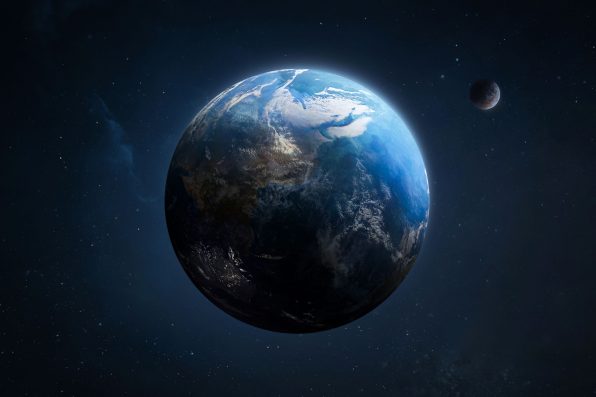Saturn is known for its dazzling ring system, which is the most complex of all the planets in our solar system. The rings are made of ice and rock and can even be seen through a small telescope. A new study suggests that Earth may have had a similar ring system in its past, specifically 466 million years ago.
The ring would have lasted for 20 to 40 million years and was thought to have been created from the debris of a passing asteroid that was destroyed. The ring may have contributed to the coldest period on Earth, which occurred within the past 500 million years.
Between 488 million and 443 million years ago, falling debris from a large asteroid created 21 crater sites around the world. This era was part of the Ordovician period, when the rate of asteroid impacts on Earth saw a dramatic increase. Researchers analyzed these craters to prove our planet once had a ring.
A team led by Andy Tomkins, a professor of planetary science at Monash University in Australia, used computer models to map out the initial locations of the craters over 400 million years ago.
It turned out that all the craters formed on continents that floated within 30 degrees of the equator, suggesting they were created by falling debris from the same asteroid. The large asteroid broke up before it could strike the Earth at full force.
“Under normal circumstances, asteroids hitting Earth can hit at any latitude, at random, as we see in craters on the moon, Mars, and Mercury,” Tomkins stated. “So, it’s extremely unlikely that all 21 craters from this period would form close to the equator if they were unrelated to one another.”
The chances that the impact sites were the result of random asteroid strikes was about one in 25 million.
According to the scientists, the crater locations lining the equator are consistent with a debris ring orbiting Earth. Such rings tend to form above planets’ equators, as can be seen in Saturn, Jupiter, Uranus, and Neptune.
It is estimated that the asteroid would have been roughly 7.7 miles wide or slightly smaller. Once it broke up, the pieces would have floated around until they settled into a ring of debris orbiting Earth’s equator.

Sign up for Chip Chick’s newsletter and get stories like this delivered to your inbox.


